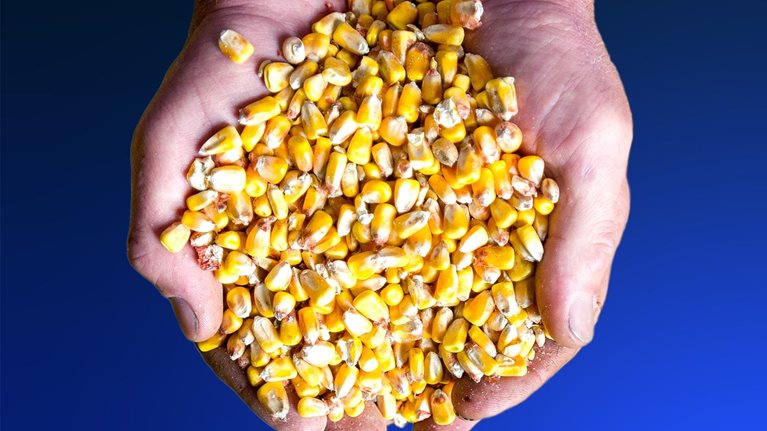
Biodiversity refers to the full variety of life on Earth, from bacteria and plants to animals and entire ecosystems, such as mangrove forests or coral reefs. A wide range of flourishing flora and fauna species indicates an ecosystem’s overall health. Because biodiversity is critical to a number of industries—from pharmaceuticals to agriculture—there’s also a strong relationship between biodiversity and healthy economies.
Get to know and directly engage with senior McKinsey experts on biodiversity
Daniel Aminetzah is a senior partner in McKinsey’s New York office, Joshua Katz is a partner in the Connecticut office, Julien Claes is a partner in the Brussels office, Kartik Jayaram is a senior partner in the Nairobi office, and Tomas Nauclér is a senior partner in the Stockholm office.
Business leaders are increasingly aware of the threats of biodiversity loss and are taking steps to confront them. In this Explainer, we’ll explore the importance of biodiversity and what companies are doing to support it.
Learn more about McKinsey’s Sustainability Practice.
What role does biodiversity play in nature more broadly?
Biodiversity is a core component of biosphere integrity, one of the nine planetary systems that keep Earth in balance and maintain its overall stability and resilience. Six of these, including biosphere integrity, are currently in danger of further degradation and collapse.
All indicators of natural ecosystem health have fallen sharply over the past 50 years. A recent survey of business leaders by the World Economic Forum ranks biodiversity loss and ecosystem collapse as the third-largest global risk over the next ten years. Its varied repercussions could have dire impacts on our societies and well-being.
The main reason for the world’s biodiversity loss is land conversion, most of which is caused by food and agricultural systems. Scientists estimate that livestock agriculture contributes to about 53 percent of terrestrial biodiversity loss, while crop agriculture accounts for about 32 percent.1
What is the international community doing about biodiversity loss?
The UN Conference of the Parties (COP) meets every year to discuss the world’s progress toward net zero. A related group, the UN Conference of the Parties to the Convention on Biological Diversity, meets every two years to discuss the prevention of biodiversity loss. The first COP on biodiversity, COP1, was held in 1994 in the Bahamas.

Looking for direct answers to other complex questions?
COP15, chaired by China and held in Montreal in 2022, was the largest-ever conference on biodiversity. There, nearly 20,000 leaders and representatives—a marked increase from the fewer than 4,000 who attended the previous meeting—adopted a landmark agreement to protect natural capital and limit biodiversity loss around the world. The Kunming-Montreal Global Biodiversity Framework provides a range of targets, including the following:
- protecting at least 30 percent of terrestrial, inland water, and coastal and marine areas
- ensuring that at least 30 percent of degraded areas are under effective restoration
- mobilizing $200 billion per year by 2030 to invest in biodiversity
In addition to the 30x30 initiative outlined in the Kunming-Montreal framework, several countries are pursuing changes in land use policy. Brazil, for example, has committed to recovering about 15 million hectares of degraded pasturelands by 2030. The country has pioneered the use of integrated crop–livestock–forestry systems, which maximize land use while providing agricultural and economic benefits. As of 2021, over 17 million hectares of cropland were already using these techniques.
Learn more about McKinsey’s Natural Capital and Nature service line.
What are some innovative mechanisms for addressing biodiversity loss?
Natural climate solutions (NCS)—nature-based actions that either reduce or sequester greenhouse gas emissions—frequently support biodiversity. These solutions protect, restore, and manage nature to support global climate goals. They include forestry practices, wetland-related practices, restorative or regenerative agriculture practices, and ocean-based practices.
Biodiversity credits are another nascent mechanism for addressing biodiversity loss. These are verifiable and quantifiable units of restored or preserved biodiversity over a predetermined time frame. What “unit of biodiversity” actually means, though, varies; there are multiple ways to define a unit. Depending on the project, a unit is usually based on a specific area (one hectare, for example), a measure of improvement (such as a 1 percent gain across an ecosystem-specific metric), and the length of the contract. A credit could also include other features, such as specific actions to restore keystone species or support Indigenous communities.
What can biodiversity credits accomplish? With the right safeguards in place, credits could help businesses create value while protecting nature and local communities. The voluntary market for biodiversity credits is still in its early stages, but McKinsey and the World Economic Forum estimate that global demand could reach $69 billion by 2050.
Here are four potential use cases for biodiversity credits:
- Enhance carbon credits for better nature outcomes. Carbon credits and biodiversity credits could be bundled and made available for organizations to buy together to achieve their climate targets.
- Access ecosystem services as inputs. Many organizations rely on natural capital—such as waterways, soil, and air—that they don’t directly control. Biodiversity credits could allow these companies to fund improvements to the health of the natural capital in their value chains, which could secure and improve access to these ecosystem services.
- Contribute to nature recovery beyond an organization’s own impact. This could involve companies contributing to a region’s ecosystem restoration or protection program through the purchase of biodiversity credits.
- Bundle products with nature recovery. This would allow customers to invest in nature improvements as an additional attribute of the product for sale.
What can different industries do to support biodiversity and natural capital?
When it comes to biodiversity loss, the industries that touch either large swathes of land or ecologically sensitive areas are those that have the deepest impact. The agriculture industry falls into the former category, while oil and gas organizations typically fall into the latter.
McKinsey research indicates that corporate action could help set natural capital on a path to recovery by 2050. Here are two practices that could have a large effect on the agriculture sector’s impact on nature:
- Agroforestry (for example, planting trees in cropland and pastureland and implementing buffer strips of natural-vegetation cover) could bring significant improvements in biodiversity. Agroforestry in cropland and pastureland combined could reduce 11 percent of the projected 2050 biodiversity deficit.
- Regenerative agriculture at scale could mitigate a significant amount of biodiversity loss by 2050. This includes planting cover crops and using no-till farming, which helps the soil retain more carbon.
Here are some other corporate actions on biodiversity that would involve organizations and entities from multiple sectors:
- plant-based alternatives for meat and dairy, advanced seed technology, and the reduction of food loss and waste
- sustainable-forestry measures—including variable thinning instead of clear-cutting and multispecies forestry techniques
Learn more about McKinsey’s Sustainability Practice, and check out job opportunities related to sustainability if you’re interested in working at McKinsey.
Articles referenced:
- “Biodiversity credits: Lessons for leaders,” April 8, 2024, Jason Eis and Madison Cole
- “Striking the balance: Catalyzing a sustainable land-use transition,” November 7, 2023, Tom Brennan, Nicolas Denis, Nelson Ferreira, Amandla Ooko-Ombaka, Pradeep Prabhala, and Stephanie Stefanski
- “Author Talks: What will it take to save the planet?” August 16, 2023, Siddarth Shrikanth
- “The agricultural transition: Building a sustainable future,” June 27, 2023, Onyx Bengston, Sherry Feng, Vasanth Ganesan, Joshua Katz, Hannah Kitchel, Pradeep Prabhala, Peter Mannion, Adam Richter, Wilson Roen, and Jan Vlcek
- “Seeing nature differently: How businesses are waking up,” April 20, 2023, Jason Eis and Elizabeth Maruma Mrema
- “Partnering for the planet: An NGO success story,” April 20, 2023, Tony Hansen and Jennifer Morris
- “Nature in the balance: What companies can do to restore natural capital,” December 5, 2022, Daniel Aminetzah, Julien Claes, Caroline De Vit, Ivo Erben, Duko Hopman, Kartik Jayaram, Joshua Katz, Tomas Nauclér, Hamid Samandari, Tucker Van Aken, and Dee Yang
- “Valuing nature conservation,” September 22, 2020, Julien Claes, Michael Conway, Tony Hansen, Kimberly Henderson, Duko Hopman, Joshua Katz, Clarisse Magnin-Mallez, Dickon Pinner, Matt Rogers, Antoine Stevens, and Robert Wilson
- “Biodiversity: The next frontier in sustainable fashion,” July 23, 2020, Anna Granskog, Franck Laizet, Miriam Lobis, and Corinne Sawers



